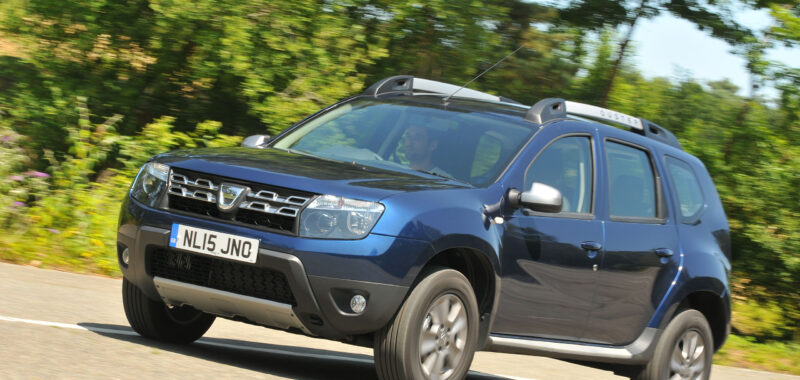Peer into the Duster’s cabin and while you wouldn’t conclude that the Promised Land now lay before you, you were unlikely to throw your hands up in horror.
The interior looked perfectly pleasant and was proficiently styled, even if a little grey. Probe away diligently at the largely rock hard plastics of many different textures and you soon gained a sense of where Dacia had cut corners to meet its affordable price.
For a car in which right hand drive appeared an afterthought – it took two years for Dacia to get around to making it – the fundamental driving position was actually quite reasonable.
There was no reach adjustment on the steering wheel which was disappointing and for taller drivers it felt too far away, but the relationship between seat, driver and pedals was acceptable.
You sat high in the car in time-honoured SUV style and while the driver’s seat was height adjustable the squab itself was flat, short and shapeless providing no more than adequate comfort over longer distances.
Likewise the Dacia’s side bolsters, whose lack of support was mitigated only by the fact the Duster was not a car that would ever generate substantial lateral g.
Ergonomically it was there or thereabouts. The switchgear was not pretty and the ventilation controls were set a little too low but it was never a problem to identify and operate whichever dial, switch or button you needed.
All round visibility was excellent too. It’s worth remembering however that air conditioning was available only on top spec Laureate models.
By class standards the Duster was pretty roomy, too. There was space in the back and front for four average adults to travel in peace, with the only short straw being the additon of a fifth passenger.
Not only would he or she be perched uncomfortably on a pad between the rear seats, but the centre seatbelt arrangement, which had its upper mounting point far behind you on the C-pillar, was sub-optimal not just for you, but the person sitting to your left.
Predictably, given the price, there wasn’t a great deal of equipment on the basic Duster model – but you did get power steering and remote central locking.
Opting for Access trim added a bit more equipment, mainly in the shape of bigger steel wheels, electric front windows and height adjustable rear headrests.
Move up to mid-spec Ambiance trims and suddenly the Duster became a lot more modern, with kit including fog lights, DAB radio, Bluetooth and USB connectivity, while for 2016 the Ambiance Prime spec added a bit more luxury, including an exclusive metallic paint job and 16in alloy wheels.
The range-topping trims – Laureate and Prestige both offered 16in alloy wheels, air conditioning, electrically adjustable and heated wing mirrors, while the latter feature a 7in touchscreen infotainment system with sat nav and traffic updates, a reversing camera and rear parking sensors.
The Duster also had a decent boot: there was no clever stuff here like underfloor storage or any means of securing your shopping.
If it was just pure space you were after, there was more space than you’ll find in the Yeti, Nissan Qashqai and even the Range Rover Evoque. Seats down and load area was comparable to that of an Audi A6 Avant.

